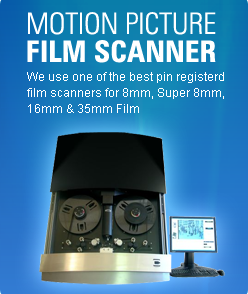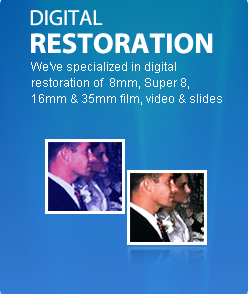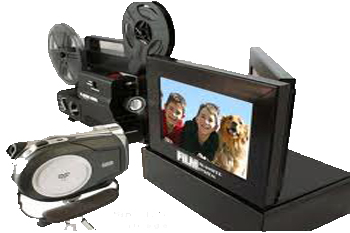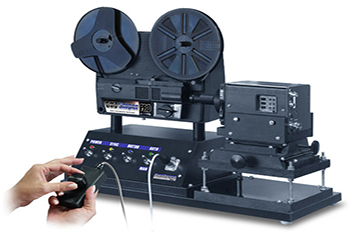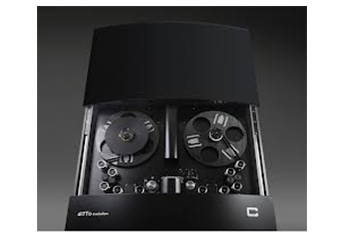
Film Conversion Equipment
Film Scanning and Film Transfer Equipment Types
The type of film scanning machine used for your 8mm, Super 8 or 16mm film conversion will have as much of an impact on the quality you receive as the resolution of the scan itself will. For example, if you wanted to digitize a photograph and tried doing it two different ways. You first put the photograph down on a table and took a picture of it using your smart phone or camera. Then you took the picture and scanned it using a flatbed scanner. If you compare the two side by side on your computer it will become really obvious that the flatbed scanner produced a digital image as good as the photograph. However, the picture you took with your phone or camera does not look close to the quality of the original photograph.
The same goes for scanning your 8mm, Super 8 or 16mm film. The real-time and frame by frame machines below are using a camcorder to take a picture of your film. The motion picture film scanner and Datacine machine are scanning the film. The results will be significantly different.
Film Conversion Equipment |
|
Real Time
|
|
Frame by Frame
|
|
Professional Film Scanners
|
|
Equally important as resolution is the type of film transfer. There are a few basic types of film transfer processes. More than 80% of the companies out there today use a real-time transfer. Any type of real-time film transfer will result in video that is 40-50% worse than the film’s current condition.
So, at this point you’ve learned that film transfers can capture at standard definition (480 lines), high definition (1080 lines) or 2K (1556 lines). You’ve also learned about the 3 different types of film transfers being used today. In order from least to best quality we have:
Miami Fun Facts: An influx of 250,000+ Cuban refugees in 1960 helped define the city's bilingual melting pot. Today, Miami is a hip urban center with a multicultural ambience and a strong economy based on baking, tourism and a other industries as diverse as its population. Several top companies are headquartered in the area, including Burger King, Norwegian Cruise Line, Ryder and Wachovia. Miami, located on Biscayne Bay in southeastern Florida, is the state's second-largest city (370,000) and the center of a large metropolitan area (nearly 1,000,000) that includes Miami Beach and Fort Lauderdale.
Florida Fun Facts: During the first half of the 1800s, U.S. troops waged war with the region’s Native American population. During the Civil War, Florida was the third state to secede from the Union. Beginning in the late 19th century, residents of Northern states flocked to Florida to escape harsh winters.
